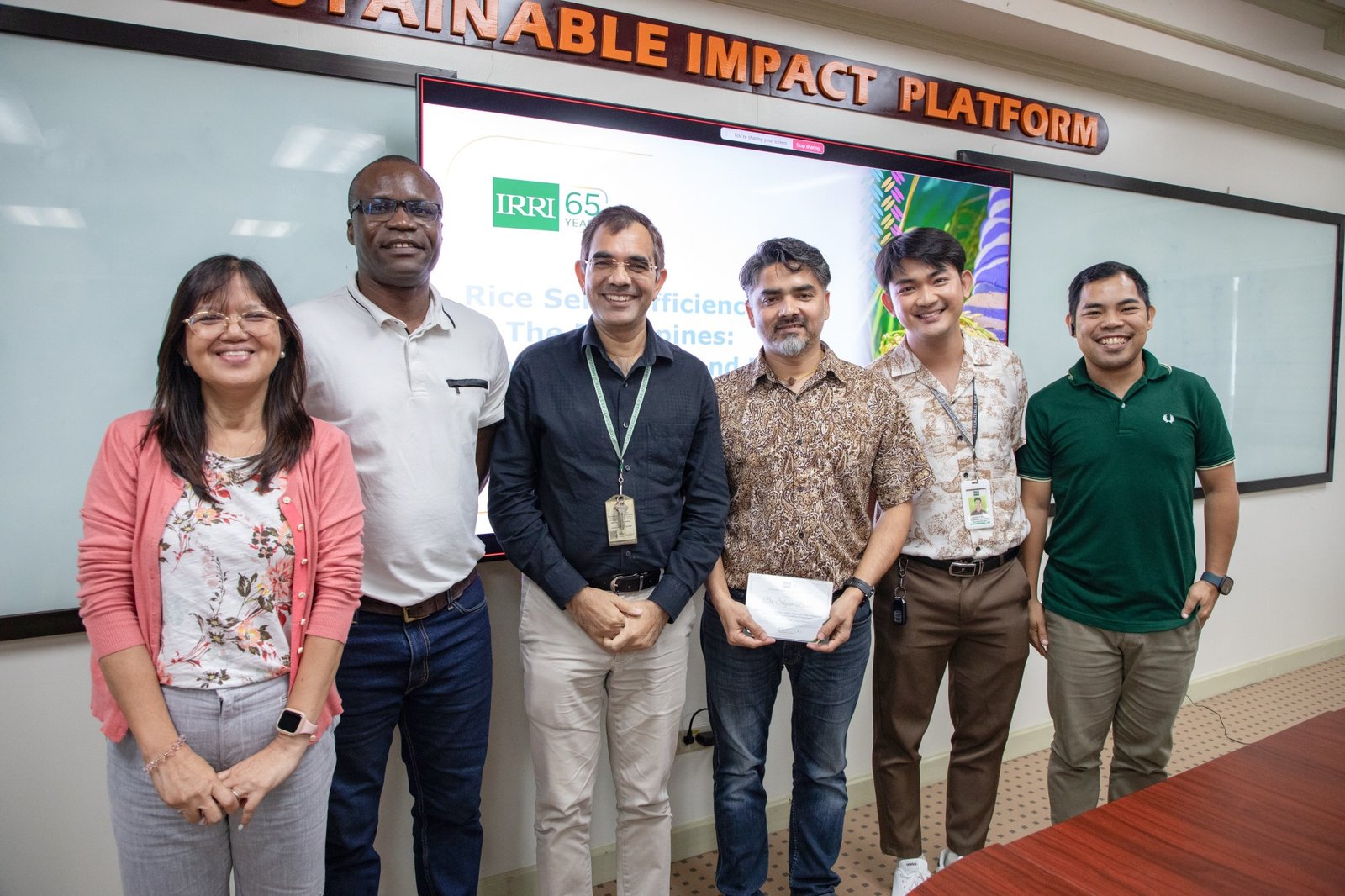Monday, 13 October 2025

Can the Philippines achieve full rice self-sufficiency by 2050 without straining its environment? That question lies at the heart of a new modeling initiative by the International Rice Research Institute (IRRI), presented by IRRI Scientist Dr. Shyam Basnet during a recent seminar titled “Pathways to Achieving Rice Self-Sufficiency in the Philippines: Balancing Food Security and the Environment.” Dr. Basnet explained that by linking food, agriculture, biodiversity, land use, and energy systems, researchers can simulate multiple futures for the nation’s rice supply. “If you follow all the government pathways—diet, productivity, and trade—then what does it mean for the environment, like having sufficient land? That’s the main question I was trying to address,” he said.
Drawing on data from the Food and Agriculture Organization (FAO), the Philippine Statistics Authority (PSA), and other scientific sources, Dr. Basnet highlighted that as of 2022, rice and rice-based products made up about 72 per cent of Filipinos’ cereal consumption. At the same time, sugar intake remains above recommended levels, while milk, legumes, fruits, vegetables, and fats and oils are under-consumed—signaling the need for healthier, more balanced diets. Rice imports, which accounted for 7.2 per cent of consumption in 2000, have nearly doubled to 14 per cent today, a sharp contrast to the 1980s when the country was largely self-sufficient due to lower population and per-capita consumption. “Meeting today’s larger demand through land expansion alone would come at a steep environmental cost,” Dr. Basnet cautioned. In 2022, the Department of Agriculture reported 77 per cent rice self-sufficiency.
To better anticipate future challenges, Dr. Basnet introduced an Excel-based simulation tool that integrates key variables such as population growth, income, animal feed demand, yield improvements, trade, land availability, and climate impacts. Through this tool, IRRI researchers modeled three plausible pathways for the Philippines’ rice sector by 2050. In the Business-as-Usual scenario, rice imports would remain at around 15 per cent, assuming current diets and productivity persist.
This would require little new cropland but deliver limited progress toward self-sufficiency. The National Target pathway envisions reducing imports to 2.6 per cent by following current government diet and productivity goals. While this would meet the self-sufficiency target, it would require significant cropland expansion, increasing risks to biodiversity and raising greenhouse gas emissions. The Ambitious pathway, on the other hand, also aims for 2.6 per cent imports but combines healthier, less rice-dependent diets with higher farm productivity. This scenario would minimize land use expansion, lower emissions and water demand, and bring the country closer to achieving sustainable self-sufficiency.
Dr. Basnet added that IRRI is enhancing the model by incorporating the Global Rice Model (IGRM)—an in-house economic framework that will help assess how these scenarios could influence future rice prices, trade dynamics, and income distribution across farmers and consumers. “I think we have very good assets in IRRI to understand how different actors in the food system affect not only justice and equity—covering environmental concerns, social justice, gender dynamics, and distribution of producer and consumer surpluses—but also the broader commodity markets connected to rice,” he said.
As the Philippines navigates mounting challenges of climate change, dietary shifts, and limited arable land, IRRI’s scenario-based modeling offers a powerful tool for policymakers to balance food security, environmental sustainability, and social equity on the road to Rice 2050.